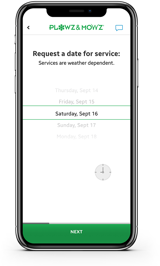Dormant Grass Care
Keeping dormant grass healthy requires fall chores.
Many homeowners breathe a sigh of relief after that first “killing” frost—the one old wives say signifies the grass has gone dormant. But chances are you found yourself mowing again after that frost. That’s because a single drop in temperature isn’t going to greatly affect the temperature of the soil—and the soil temperature is what tells the grass to go dormant.
When the soil reaches a temperature of 45 to 50° F, grass begins to conserve its nutrients and water supply, giving up that pretty green color in return. That said, much like Yogi Bear preparing for hibernation, your grass can use a little help to make it over the long winter.
So, before you settle in for a weekend of football games, you’ve got some chores to do:
-
1. Don’t blow off leaves as being “grass food.”
- Leaf decisions require a little art and a lot of common sense. If you have a light covering, you can mow the leaves into tiny little pieces, and they can provide nutrients to the grass, just like grass clippings over the summer. But if you have a dozen maple trees in your backyard that make your lawn look like it’s wearing a thick blanket of gold, you’ve got to rake them, blow them away, or pick them up with a mower bag. A heavy buildup of leaves can smother your grass. Worse yet, it can give mold a great place to set up shop.
-
2. Consider fertilizing.
- To properly fertilize in the fall, apply the nutrients the soil test came back showing were lacking. (You did do a soil test, right? You can get a soil test done at your local Cooperative Extension.) The healthier your grass emergences from winter, the greener your lawn in the spring.
-
3. Do some overseeding.
- Yes, overseeding in fall can lead to thicker grass in the spring. But you’ve got to time that right. Too soon, and the seeds will sprout, and the young grass will die when it freezes. Too late, and the ground will be frozen, so you just feed the birds. Late November is usually a cut-off time in most areas.
-
4. Protect the grass.
- Avoid allowing anyone to walk on frozen lawns because any type of traffic can be damaging, and repetitive steps—such as on a pathway—can harm grassroots. Remove all lawn furniture and summer ornaments from the grass.
-
5. Buy the right salt.
- Most of us use some type of salt to keep sidewalks clear and prevent anyone from falling on ice. But classic rock salt (sodium chloride) can accumulate and kill grass and even shrubs. Instead, choose the slightly more expensive magnesium chloride, which is effective at lower temperatures, is safer around pets, and less likely to damage vegetation.
Finally, if you feel like your lawn is looking too brown, don’t panic. The life test is simple: Dormant grass should be no easier to pull out than green grass. If you can easily pull a tuft of grass out by the roots, it indeed may be dead.
Posted on November 17, 2020
Order landscaping services for your home online, anytime!
Get a Free Online Quote Now
Leave the yard work to the pros this year, you can browse our services and schedule an appoinment online, anytime !

























